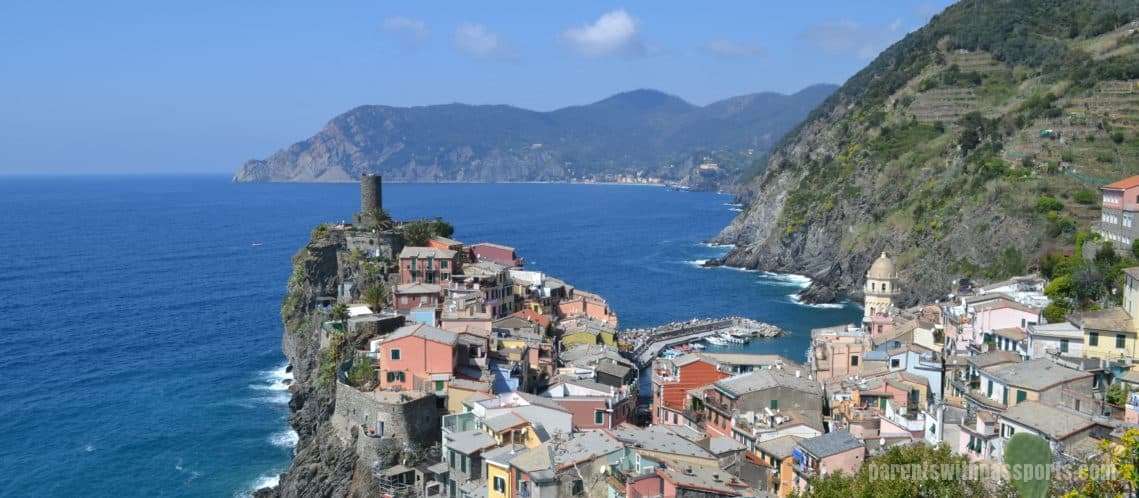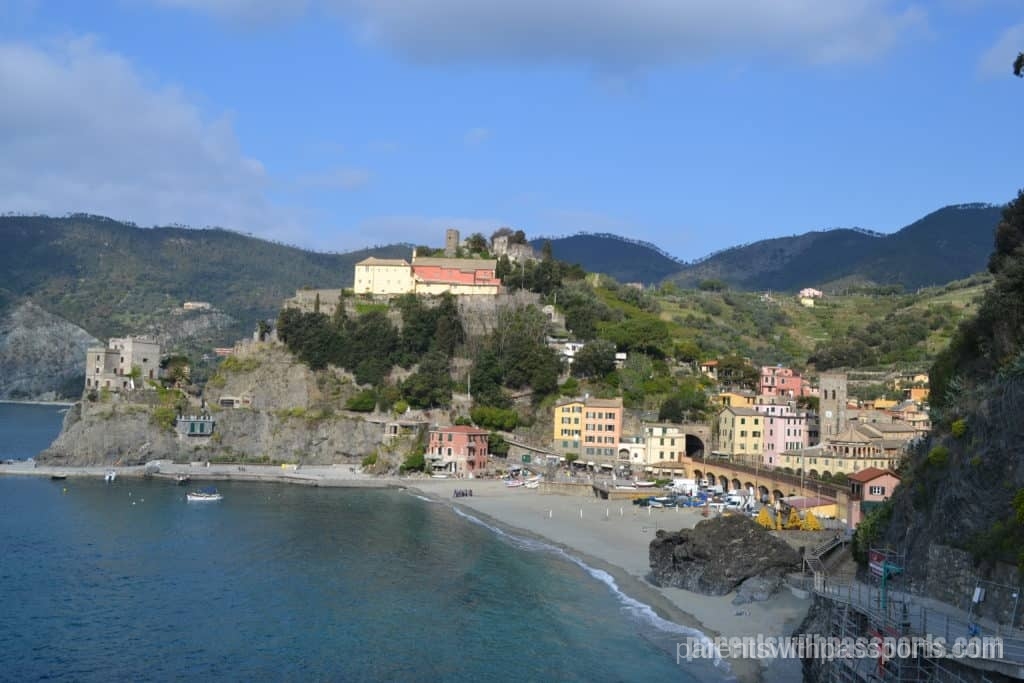Cinque Terre is a series of five picturesque towns built into a 6 mile stretch of cliffs along the Italian Riviera. Each town has its own distinct look and feel and they are connected by both trains and an awe-inspiring series of hiking trails. From north to south, the cities are Monterosso al Mare, Vernazza, Corniglia, Manarola, and Riomaggiore.
We stayed in the northernmost town of Monterosso, which proved to be an excellent starting point for hiking between the towns. We researched online and fell in love with the Hotel Villa Steno and chose the hotel more than the town itself, which is probably the least dramatic of the five. It is built on mostly flat ground and therefore lacks the colorful cliffside buildings that the other towns boast. But it is a lively and interesting town with a nice beach and great local shops and restaurants. It is divided into an “old town” and a “new town”, which are connected by a pedestrian tunnel. The train station is in the new town but the majority of hotels, restaurants, and charm are in the old town. We had some fantastic meals here and an amazing hotel stay, and we purchased both art prints and pottery at two different local artists’ shops. We found that the town had a lot to offer.
Vernazza is the next town south and is perhaps the most photographed of the 5 towns, thanks to an ancient castle built on a clifftop overlooking the city’s scenic harbor. The harbor is bustling with activity, as tourists eat in the local restaurants, drink at the bars, explore the alleyways, dip their toes in the water, and simply enjoy the beautiful town. The locals will encourage you to live “la vita pigra di Vernazza”, or the lazy life of Vernazza.
Corniglia is unique among the five towns because it is not actually on the water. (I would also say it is unique because getting from its train station to town requires a steep hike up a series of almost 400 switchback stairs.) The town is built into the hills high above the water. Steeply terraced vineyards cover the landscape above the town, as wine production here dates back to the 1300s. Because of its clifftop location, its small size, and its lack of beach access, Corniglia is the least visited of the five towns.
Manarola is a close second to Vernazza when it comes to a stunning landscape. The town is built high atop a rocky cliff, with its backside being solid rock with a sheer drop-off. It’s main street is steep and divided into an upper and lower section, beginning with the church and bell tower and ending with the ocean. Like its neighbor to the north, Manarola has abundant vineyards in the surrounding hills.
The southernmost and largest town is Riomaggiore. Buildings line a steep ravine that leads down to the harbor. The railroad tracks divide the town in two. The lower level centers around the wharf and its rocky beach, while the upper level contains old town with its main street and accompanying restaurants and shops. The town is perhaps most famous as the starting point for Via dell’Amore (Lover’s Lane), a romantic and picturesque path that leads around the cliff to Manarola. Sadly, this path is currently closed indefinitely since a 2012 rockslide injured four tourists, and numerous geological surveys and governmental red tape have held up the funding of the repairs.
In order to hike the trails between any of the 5 towns, you need to purchase a Cinque Terre park card. There are two options – the Cinque Terre Trekking Card for one or two days of hiking or the Cinque Terre Treno Multi-Service Card which includes the hiking from the basic card but adds on local train service. The hiking card can be purchased at the trail head but the multi-service card must be purchased in a train station.
Before setting out, make sure to check which trails are open. Our hotel provided us with a daily sheet of the “hiking situation”. During our trip, the main trail between Corniglia and Manarola was closed, but we were able to take the longer and more scenic walk up through the town of Volastra. The easy Lover’s Lane walk from Manarola to Riomaggiore was also closed, but there was an alternate route that basically went straight up and over the hill instead of around it. (The theme seemed to be that alternate routes always existed but they tended to be longer and more strenuous – but also paid off with amazing views.)
We used Monterosso as our home base and hiked for two full days. The first day we hiked between Monterosso and Vernazza and then on to Corniglia after lunch in Vernazza. We then took the train back from Corniglia to Monterosso. The next day we picked up where we left off by taking the train back to Corniglia and starting from there hiked to Manarola before finishing with the final leg to Riomaggiore. The hikes were challenging but the views were unparalleled. When we saw the elevation of the final hike, we briefly considered finishing in Manarola but we knew we would feel our trip was incomplete if we didn’t hike between and visit all five towns. It was absolutely worth it in the end.





